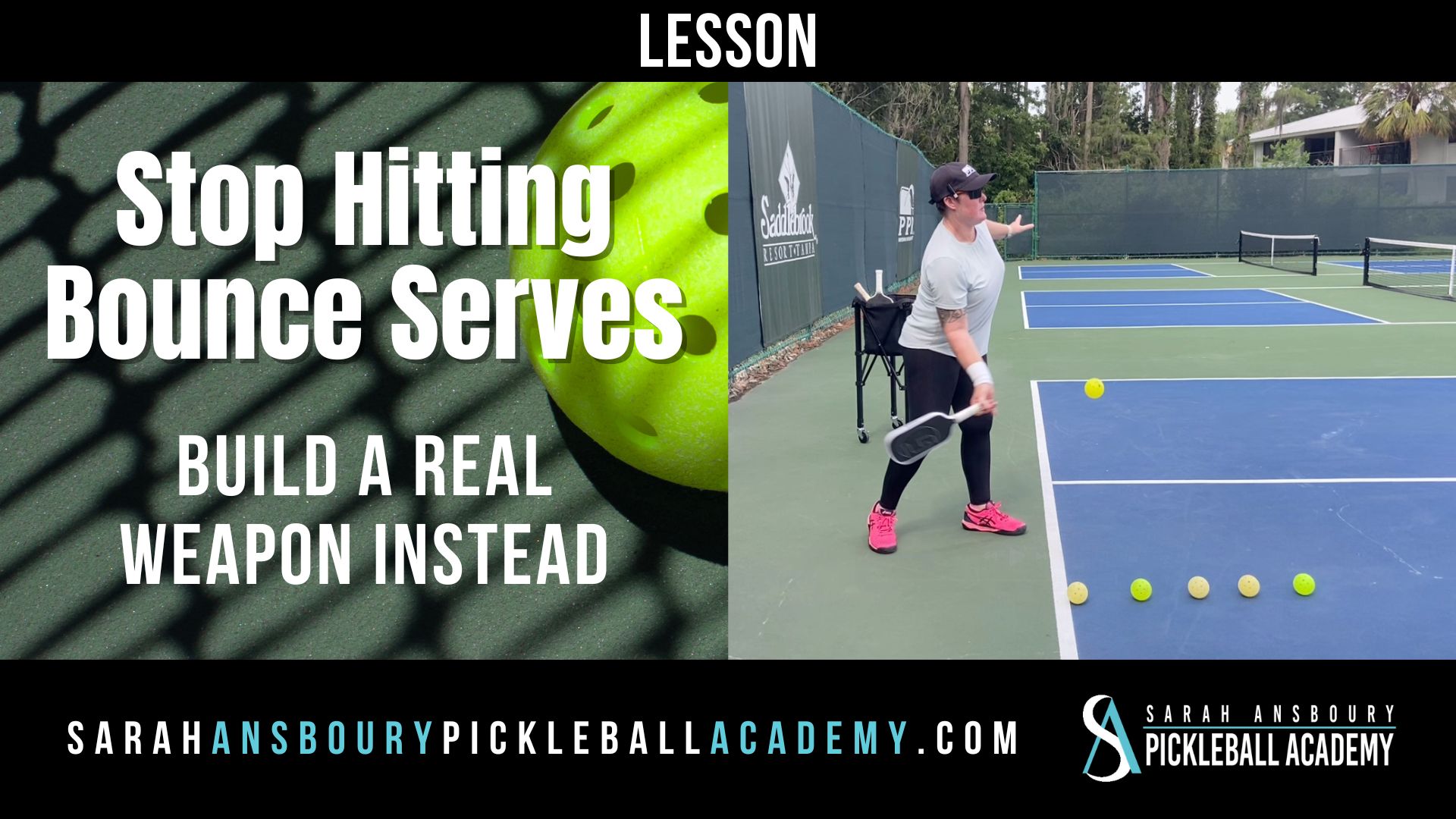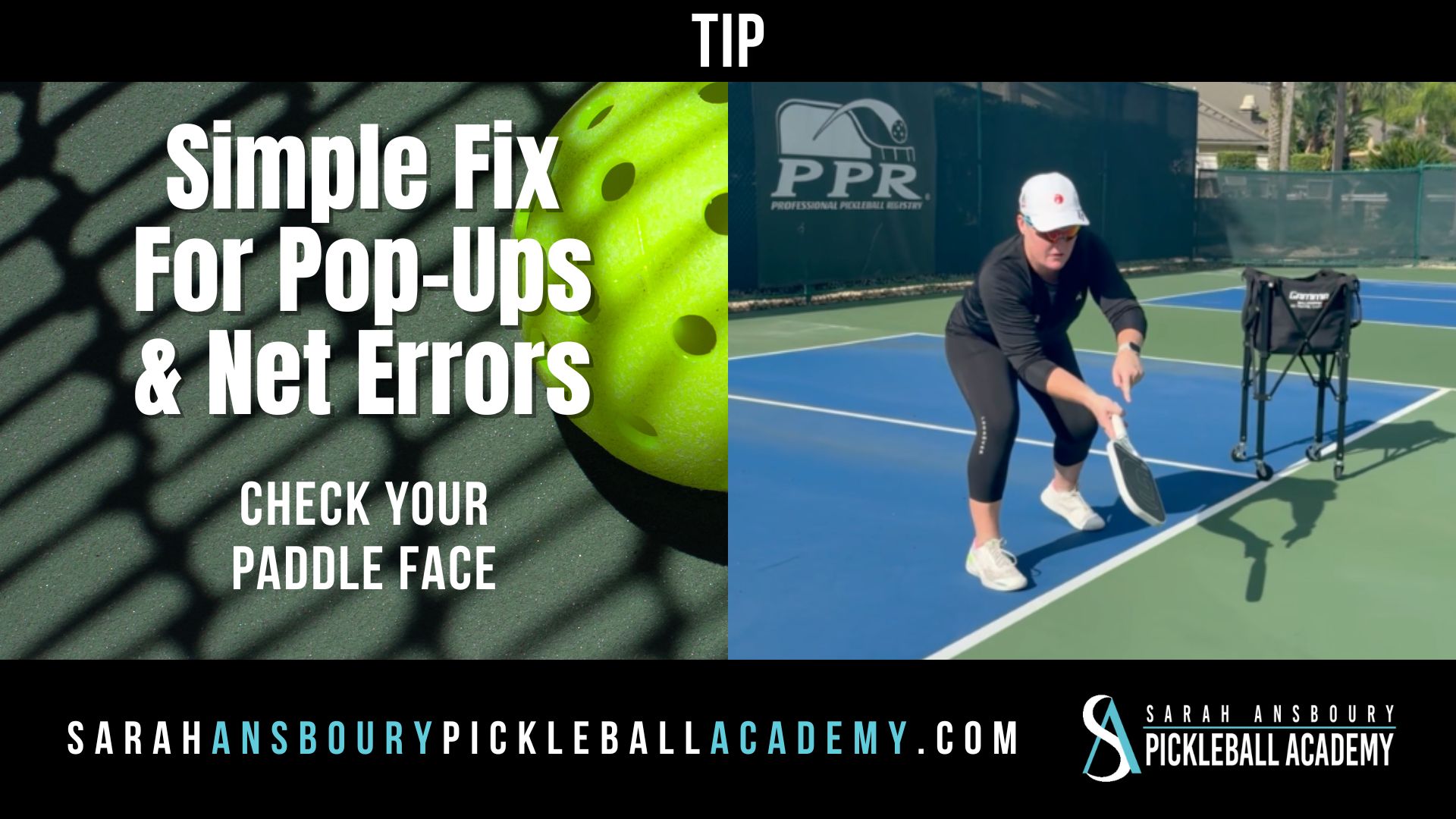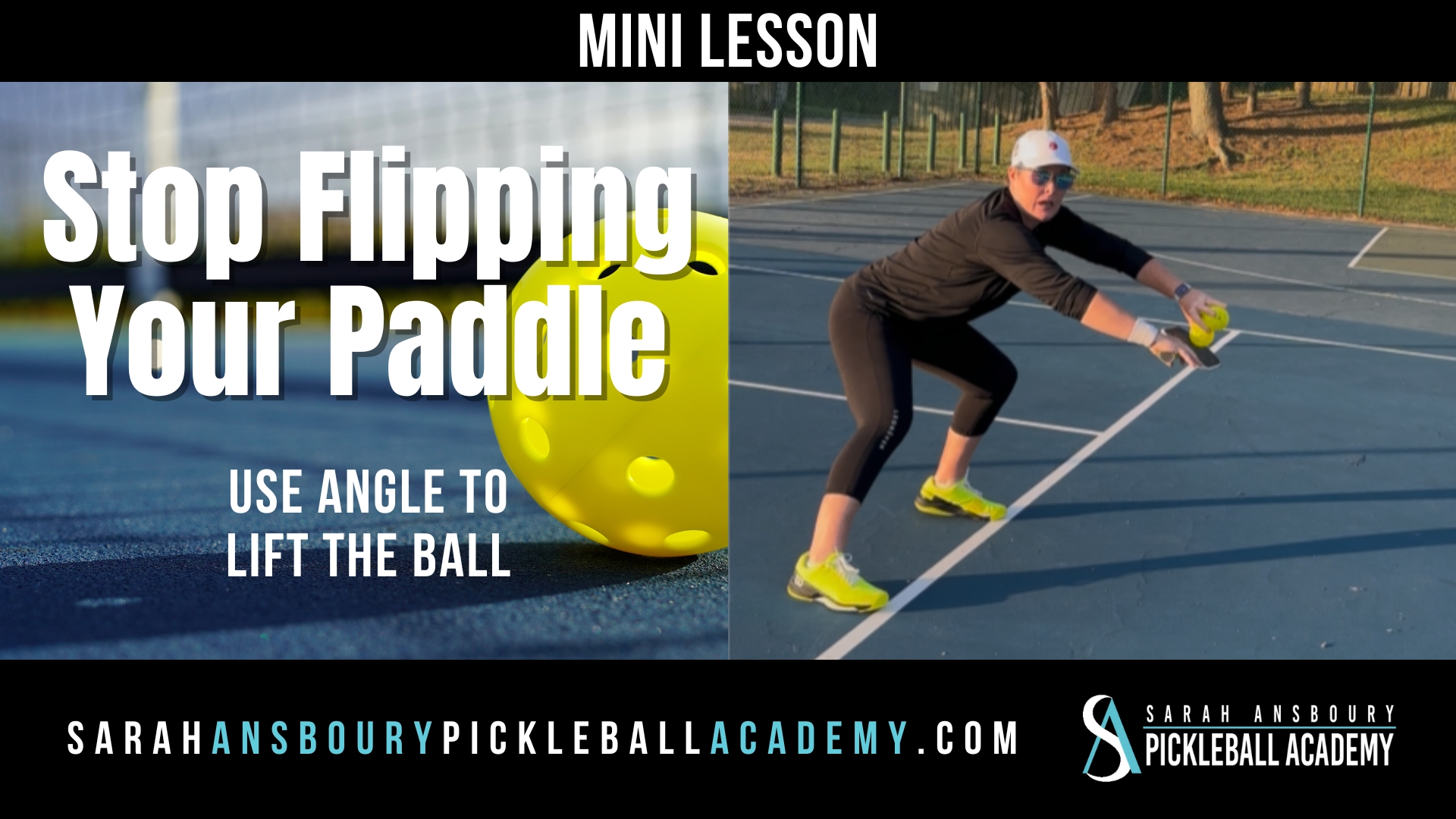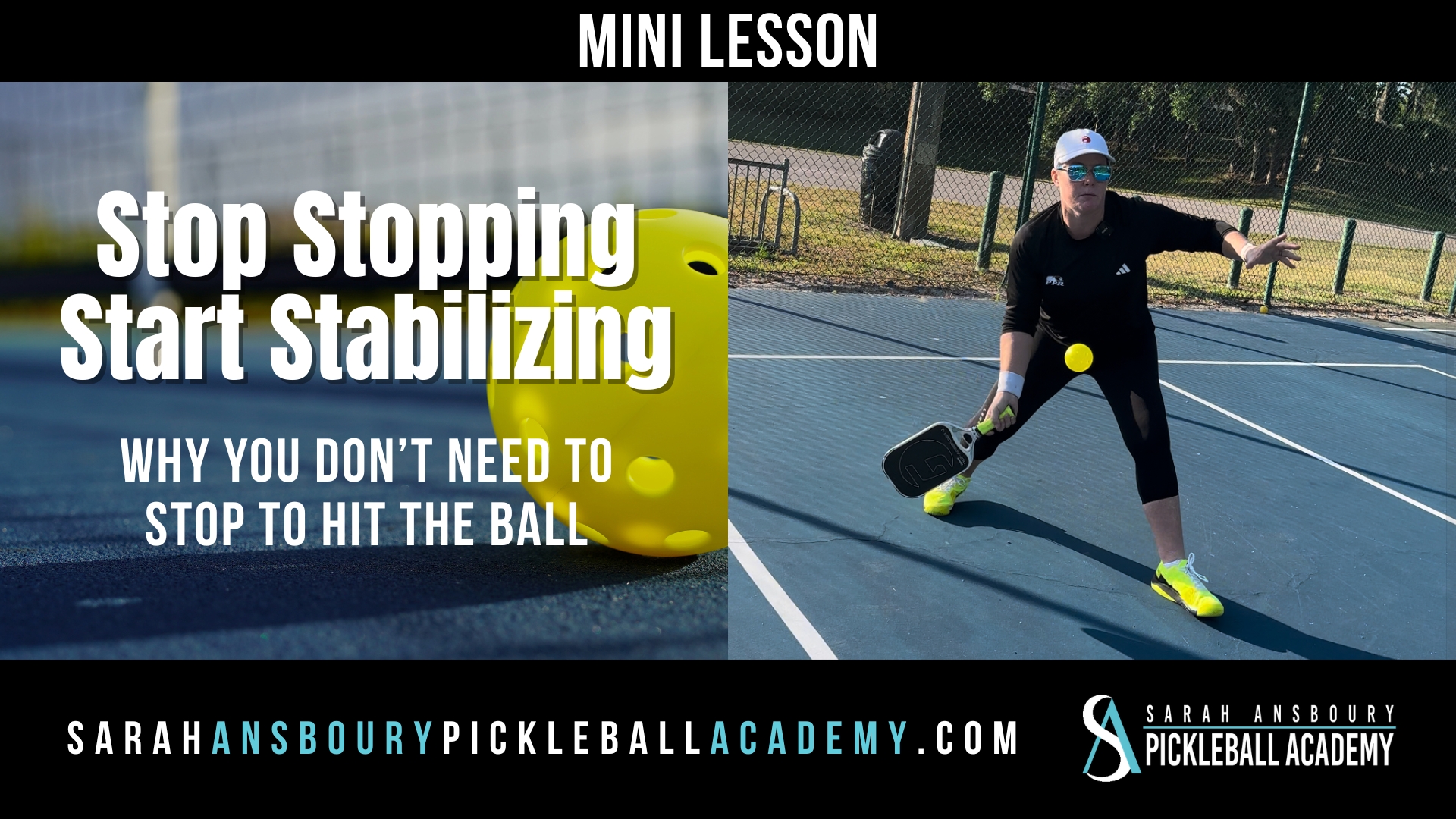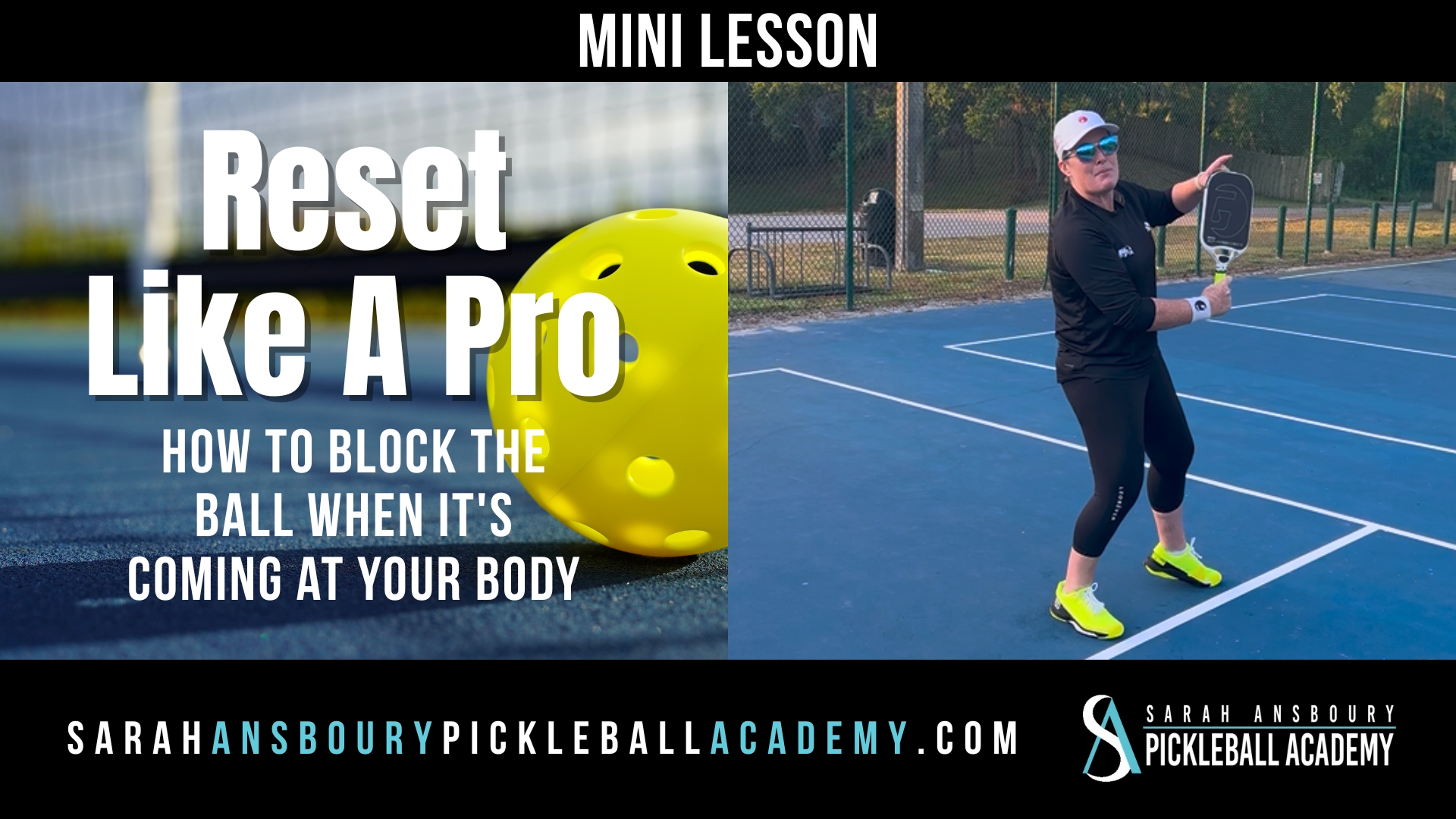On the pickleball court, your follow through isn’t just about finishing the shot—it’s a key to generating acceleration, creating topspin, and transitioning from defense to offense. Let’s break this down with a simple yet powerful visual and drill that will help you elongate your shot and unlock more power from your legs and paddle motion.
The Visual: One Ball, Three Contact Points
Picture this: one ball, and three different contact points on your paddle. This is about understanding how the ball interacts with your paddle at different stages—especially when you’re taking it off the bounce. If I’m pushing forward after the bounce, I want to feel the length of my paddle through the shot. That’s where swing speed and acceleration start—not just from the arm, but from the legs too.
Defensive to Offensive: Creating Opportunity
In mid-court, when you’re reaching and absorbing the ball off the bounce, it often starts as a defensive shot. But that doesn’t mean it has to stay that way.
A lot of players miss the opportunity in the fifth and seventh shots. These are incredibly attackable, but only if you know how to transition properly.
I like to self-feed here. Why? Because I’m in control. More importantly, it forces my non-dominant hand to stay active, which naturally engages my shoulder, opens my torso, and helps drive acceleration from the legs.
Loading Power from the Ground Up
Let’s talk about how we accelerate. The power isn’t coming from winding up with the paddle—it starts with your legs.
- Load on your right leg (if you’re right-handed).
- Release weight off your left.
- Make contact out in front.
- Push from right to left, creating forward momentum.
This shift from leg to leg adds not only power, but also topspin—especially when done with a smooth, low-to-high paddle path.
And yes, it might even feel like you’re jumping a little, but it’s not about jumping. It’s about loading and exploding.
Low Swinging Volley: Take It Early
This same principle applies at the net. If I recognize I can take a ball earlier—especially one that’s low—I don’t need to wait for the perfect bounce. I can step in and treat it as a low swinging volley. That first step gets me loaded, the second brings acceleration.
If you’re stepping too early with your front foot, you can get locked in. But with this first step load, I keep acceleration and forward movement going—whether it’s a volley or a ball off the bounce.
Don’t Force the Wrap: Let It Happen Naturally
We’ve all heard the tennis phrases: “wrap the paddle around your neck,” “accelerate across your body.” That’s not what we want in pickleball.
We’re looking for forward extension, not forced wraparounds. If you’re too focused on swinging across, you’ll lose control, direction, and be slow to recover.
Instead, think about letting your paddle pull you through the ball, so your finish naturally positions you for the next shot. That’s how we build rhythm and flow, especially in transition zones.
Drill It: From Neutral to Offense, Forehand or Backhand
This simple self-feed drill works both forehand and backhand:
- Start with a defensive shot.
- Use footwork to create space.
- Load, accelerate, and follow through.
- Transition from defense to neutral, then to offense—on the bounce or out of the air.
The key is repetition. Feel your paddle finishing toward the target, and let that motion build your consistency and confidence.
Takeaways
- Footwork is foundational: The first step loads power, the second creates acceleration.
- Use your non-dominant hand to engage your torso and keep your swing connected.
- Shift from defensive to offensive mindset by recognizing opportunities on the fifth and seventh shots.
- Your legs generate power—not your backswing.
- Focus on elongating your paddle path, not wrapping across your body.
- Let your follow through pull you into the next shot, especially in transition.


